
|
E-M1 Macro and Close-Ups (Applicable to other OM-D cameras as well) |

|
My other articles related to the |
|
I did a quick check of macro or close-up capability for three Olympus lenses on the E-M1 camera; then I spent some time scrutinizing the results; this article is a brief summary.
The lenses checked were (links are to the appropriate sections):
The results and discussion I'm presenting are also applicable to other cameras of the OM-D family, maybe only with the exception of how Olympus may be handling the diffraction effects in the image processing stage (where imaging engines may differ). The in-camera JPEGs were generated in the Natural Picture Mode with no adjustments, noise filter at Low. Note of March 21, 2017 The original version of this report was posted in November of 2013. One of the observations was progressive loss of sharpness away from the center for the MZD 12-40/2.8 PRO lens. Recently, I developed a suspicion that the target (a bank note with a steel ruler) was misaligned in that sample series. This would explain the observed behavior. By misaligned I mean that the lens axis is not exactly perpendicular to the surface being photographed. Some areas will be outside of the depth-of-field range. An error of just one degree of angle is large enough to cause effects similar to those observed. The DoF is (literally) paper-thin at these distances, especially at wider apertures. Just in case, I re-shot all three sample sets, all in a single session, under identical conditions. The first two returned results like before; in the third one, the off-center fuzziness was greatly reduced. I had to upgrade my evaluation of the PRO lens performance in close-up shooting. My apologies to Olympus engineers. Oh, well, at least I've learned a few new things. |
|
This mid-range and mid-price lens is perhaps the most underrated piece of optics in the μFT stable, for a number of reasons which one day I will discuss separately. Yet it delivers consistently good results and has — for a general-use lens at least — quite nice close-up and macro capability.
At the 50 mm end it can focus as close as 23 cm from the front rim, filling the frame with a subject about 85 mm wide. While this is no macro, it is useful in taking pictures of quite small objects:
|
| 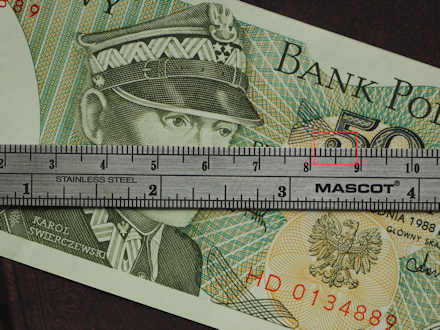
| 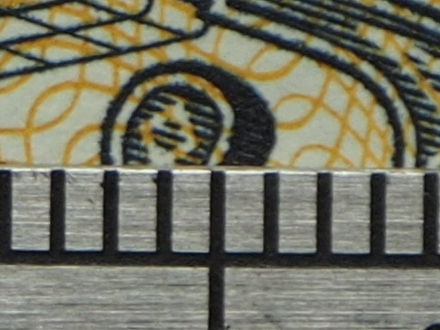
|
E-M1, MZD 12-50 mm F/3.5-6.3 at 50 mm, F/6.3 (full frame)
|
|
| 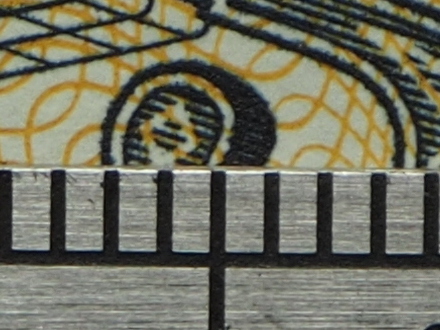
Same, F/8.0 (full frame)
| 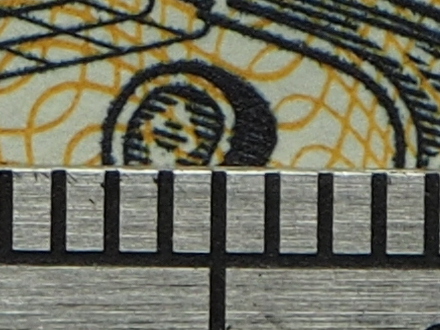
Same, F/11 (full frame)
|
At the full aperture of F/6.3 there is some softness, even in the center, but already at F/8. just 2/3 F-stop down, the detail at the center is exemplary and the corners are quite good. At F/11 the center does not seem to change, but the corners improve to the same level. Nice.
I am not showing the last two images but you may inspect the full frames: F/16 and F/22. Switching into the Macro mode (press button, push zoom ring, not too intuitive, as I discovered the hard way) locks the nominal focal length at 43 mm (I am saying "nominal" because the actual one may be significantly different at this focusing distance; I am sure it is much shorter). The object may be as close as 7 cm from the lens edge, and the frame will be then just about 35 mm wide. This is the same field of view as in a 35-mm film camera shooting at the 1:1 "true macro" ratio. Quite impressive for a general-purpose lens.
|
| 
| 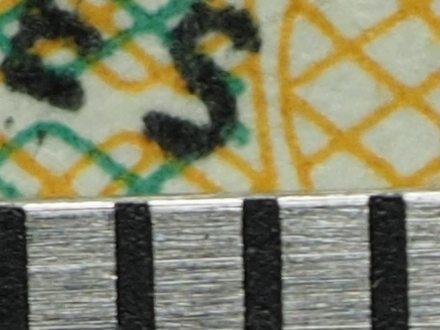
|
E-M1, MZD 12-50 mm F/3.5-6.3 at 43 mm, F/6.0 (Macro mode) (full frame)
|
|
| 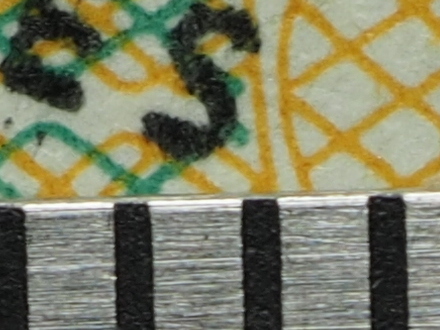
Same, F/8.0 (full frame)
| 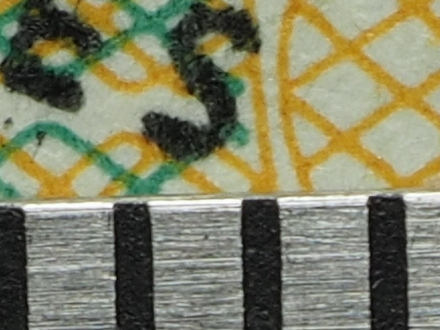
Same, F/11 (full frame)
|
At F/8 and F/11 the resolution looks really good, center and corners. The depth of field extends at F/8 a fraction of a millimeter in both directions, therefore the bank note has a right to be a bit fuzzy. Even if the performance of this lens does not quite match that of a dedicated macro, it comes close.
Again, the last stopped-down images, not shown, are available for your inspection: F/16, F/22. This is one of my legacy Four Thirds lenses; here I had to use it with a FT->μFT adapter; retaining, with this camera, full AF compatibility. This is an F/2 lens (which makes it also great for portraits). I took pictures at full aperture (just for curiosity, mostly) and at every full F-stop up to F/22. The lens focuses down to 11 cm from the tip of the barrel, providing then a field 35 mm wide (1:1 equivalent, again).
|
| 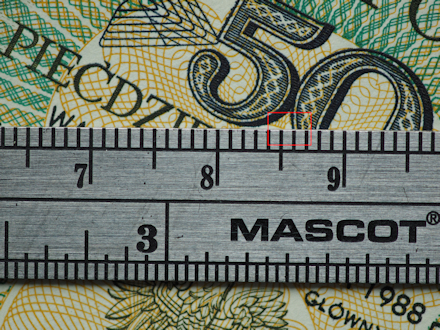
| 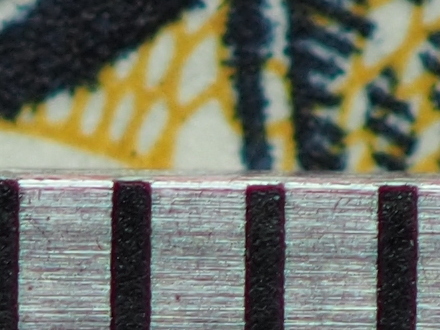
|
E-M1, ZD 50 mm F/2.0 macro at F/2 (full frame)
|
| Even at this aperture the lens is impressively sharp, especially in the center (near the digit 8, where also AF was set). Following the ruler left and right we can see some fuzziness only at the outermost 5 millimeters or so. Ignore the note in the background: it is out the depth-of-field range anyway. At 50 mm and F/2 the DoF extends by less than 0.2 mm either side of the focus plane. At F/8 it quadruples in depth, giving the paper money some chance.
|
| 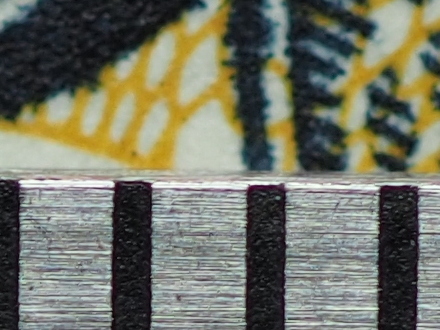
| 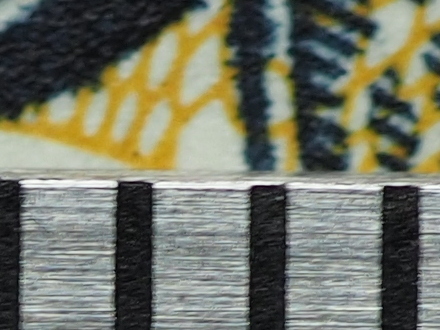
|
Same, F/2.8 (full frame)
|
Same, F/4 (full frame)
|
|
| 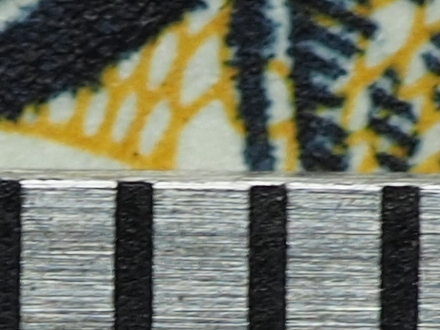
| 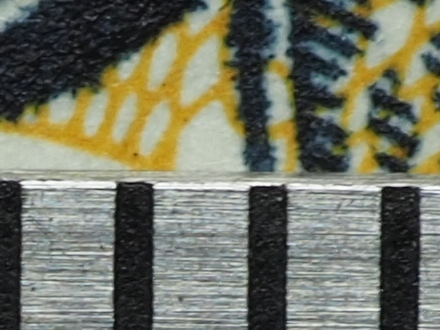
|
Same, F/5.6 (full frame)
|
Same, F/8 (full frame)
|
The (minor) fuzziness at ruler endpoints is mostly gone at F/2.8, certainly at F/4. You don't need to stop down beyond F/5.6 to get rid of optical flaws, only to increase the depth of field — when needed. Here the printing in the note gets in focus at F/8 or F/11 only.
| Two more images are available if you would like to inspect them: full frames at F/16 and F/22.
| 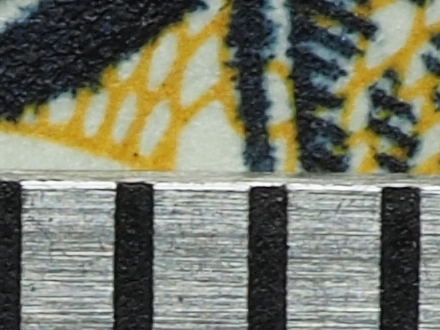
|
Same F/11 (full frame)
|
| This is the premium "standard zoom" for OM-D (and perhaps not only) cameras. In addition to constant maximum aperture, it is supposed to provide superb optical quality. The close-up trials were actually the first evaluation of this lens I did. I'm stressing this point, because the lens may be optimized for a different distance range, so that what I'm doing here has no relationship to its general performance. For this lens, I shot a series of pictures at all full F-stops from 2.8 to 22. Natural Picture Mode was used with no adjustments, WB at 5300K. The highest magnification is provided at the long end (40 mm, nominally at least), with minimum distance from the subject plane to the lens rim being just 6 cm. The field is then 55 mm wide, not too shabby.
|
| 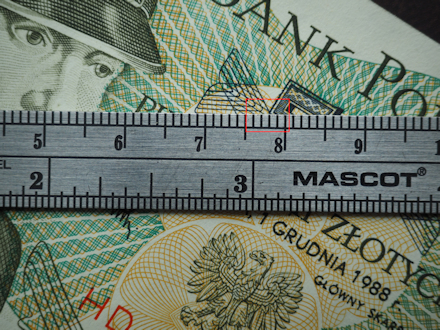
| 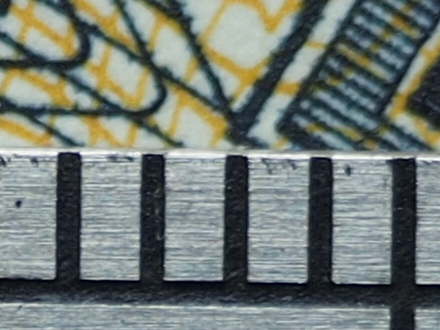
|
E-M1, MZD 12-40 mm F/2.8 at 40 mm, F/2.8 (full frame)
|
|
| 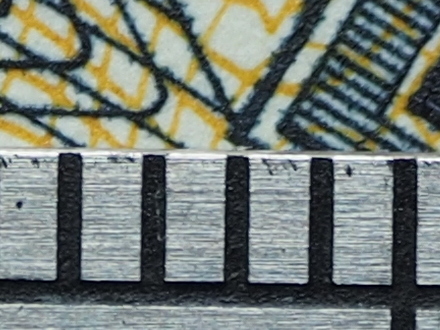
| 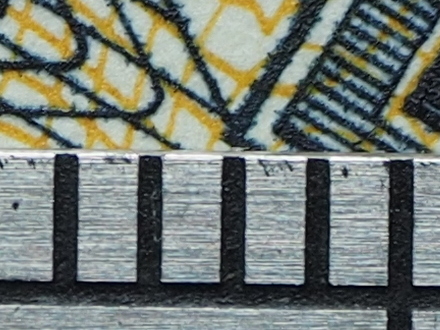
|
Ditto, F/4 (full frame)
|
Ditto, F/5.6 (full frame)
|
| Actually, the sample at F/2.8 is not bad — for a full-aperture shot. It is a little bit soft, even at the center, where it recoverd at F/4. There is also some sharpness drop in the right- and leftmost 10-15 mm of the scene, disappearing around F/5.6. Vignetting (light fall-off) is not excessive, but it is visible at F/2.8, decreasing as the aperture closes; at F/8 it (almost) disappears. That's higher than I expected. This is just for the record, not a deal breaker — usually corner fall-off does not bother me, and, besides, I did not have the "shading compensation" activated. Ignore the fuzziness of the note for apertures wider than F/5.6 — it is simply out of the DoF range. Those samples should be judged based just on the metal ruler. At F/22, image degradation due to diffraction is barely noticeable, best visible when alternating between two frames in an image browser (like FastStone or ACDSee). At F/16 I've seen none. Closed-down apertures do mask some optical flaws but usually the diffraction effects more than obliterate these gains — this seems not to be the case here. I remember an Olympus representative saying that their new imaging engine may correct some lens flaws, and diffraction was specifically named among those. Could that be it? In this presentation I skipped two apertures; you still can inspect the full frames at F/11 and F/16. These, by the way, look just beautiful.
| 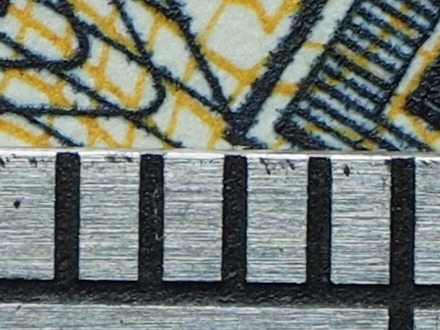
Ditto, F/8 (full frame)
Ditto, F/22 (full frame)
| Summary The first two lenses I've checked provide a full macro capability; the third one — a solid close-up one (1:1.5 equivalent). As I expected, sharpest images are provided by the legacy ZD 50 mm F/2.0 Macro, but the general-purpose MZD 12-50 mm F/3.5-6.3 EZ was almost as good when set in the Macro mode. Its disadvantage is much smaller aperture (by 2.3 EV), but it has native μFT autofocusing. The premium 12-40 mm F/2.8 MZD PRO provides less magnification, but does not stay much behind in terms of detail-rendering capability — as long as you stop it down by one or (better) two F-stops. | |||||||||||||||||||

|
My other articles related to the |
| This page is not sponsored or endorsed by Olympus (or anyone else) and presents solely the views of the author. |
| Home: wrotniak.net | Search this site | Change font size |
| Posted 2013/11/18, updated 2017/03/21 | Copyright © 2013-2017 by J. Andrzej Wrotniak |